When choosing your first scooter or your next ride, you need to consider scooter size. And one of the biggest factors in determining scooter size are the scooter bars. While you can ride any sized scooter, you want your ride to be fun, easy and comfortable. It ultimately comes down to your comfort – but how do you decide what size you need. And does it really make a difference?
Today Sacrifice Scooters is going to discuss everything you need to know about scooter bars.
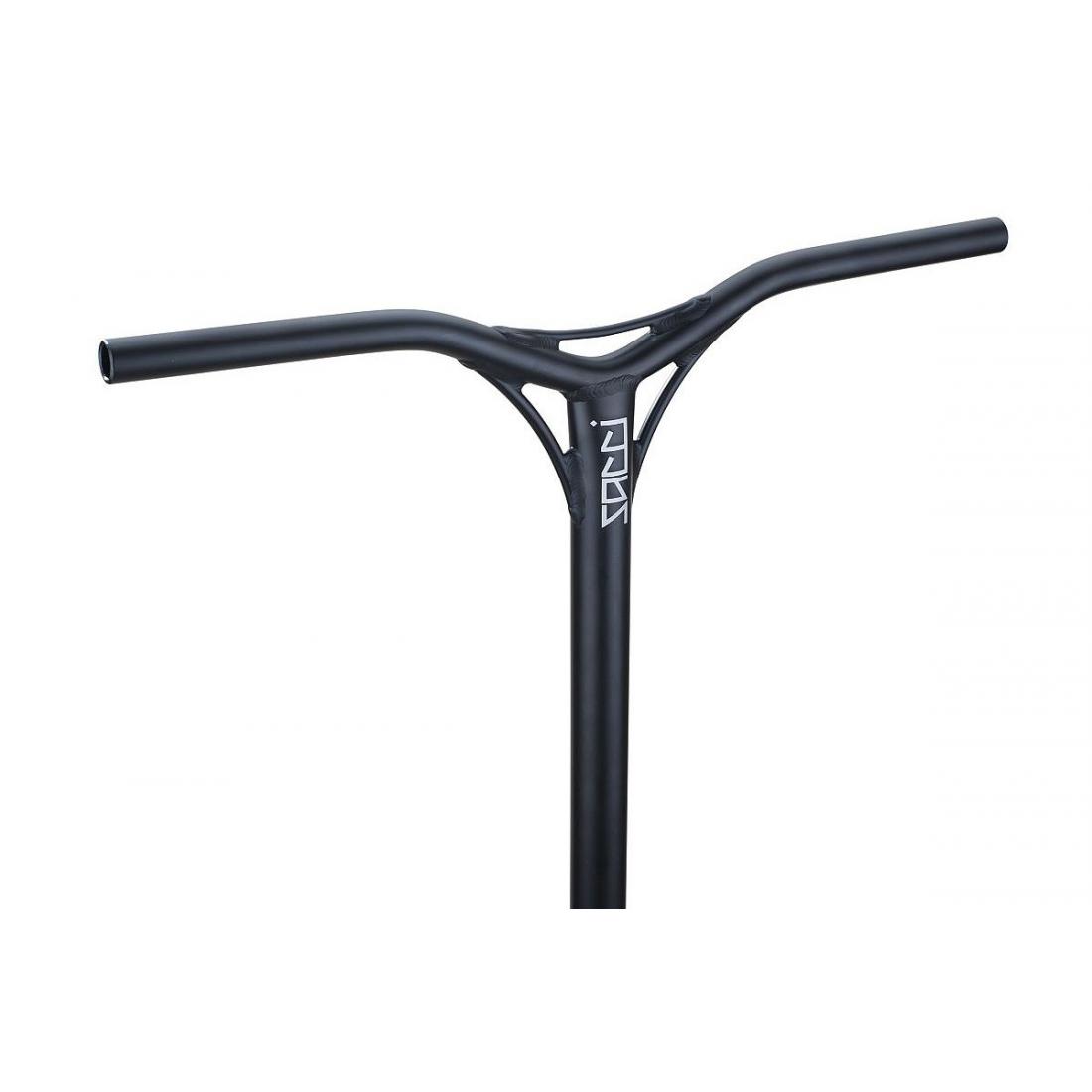
1: Scooter Bar Height
Height is one of the first considerations you should make when buying scooter bars or a complete. A general rule of thumb says that the bars should sit around hip or waist height when you stand on the deck. When buying bars alone, remember that the height measurement doesn’t take into account the rest of the scooter (deck, headtube, wheels, etc). So you need to add at lest 7 inches to bar measurements.
Bar height is important for both balance, comfort and performance. Generally, if bars are too high, you might struggle controlling the scooter or even hit your face on the cross bar. And bars that are too low make the scooter uncomfortable to ride. No one wants bars that sit right at their chest or down around their knees!
However, bar height also depends on your type of riding and preference. Shorter, smaller bars are often preferred for park tricks, whips and bri flips. This is why pro scooter bars tend to be lower than standard scooters. Street riders, however, often prefer higher bars for comfort.
2: Bar Width
When it comes to bard width, riders will all have different preferences. In general, it is a good idea to choose bars that are the same width as your shoulders. If you focus on technical tricks, like barspins, then you’ll probably want a narrower bar. But if you prefer no-hands tricks and getting big air, then you’ll prefer a wider bar. Bar width is measured from one end of the crossbar to the other.
It’s fine to order bars that are a bit wider than your shoulders as they can be cut down and even narrowed if needed. But you can’t make bars that are too small or too narrow, wider. However, remember that having bars that are wider than they are high is considered unstylish by advanced riders. They are also uncomfortable when you try to transport your scooter.
Smaller bars tend to make flips easier, result in less total weight and are easier to transport. Wider and taller bars, however, give you more stability and comfort, making them the best street scooter bars.
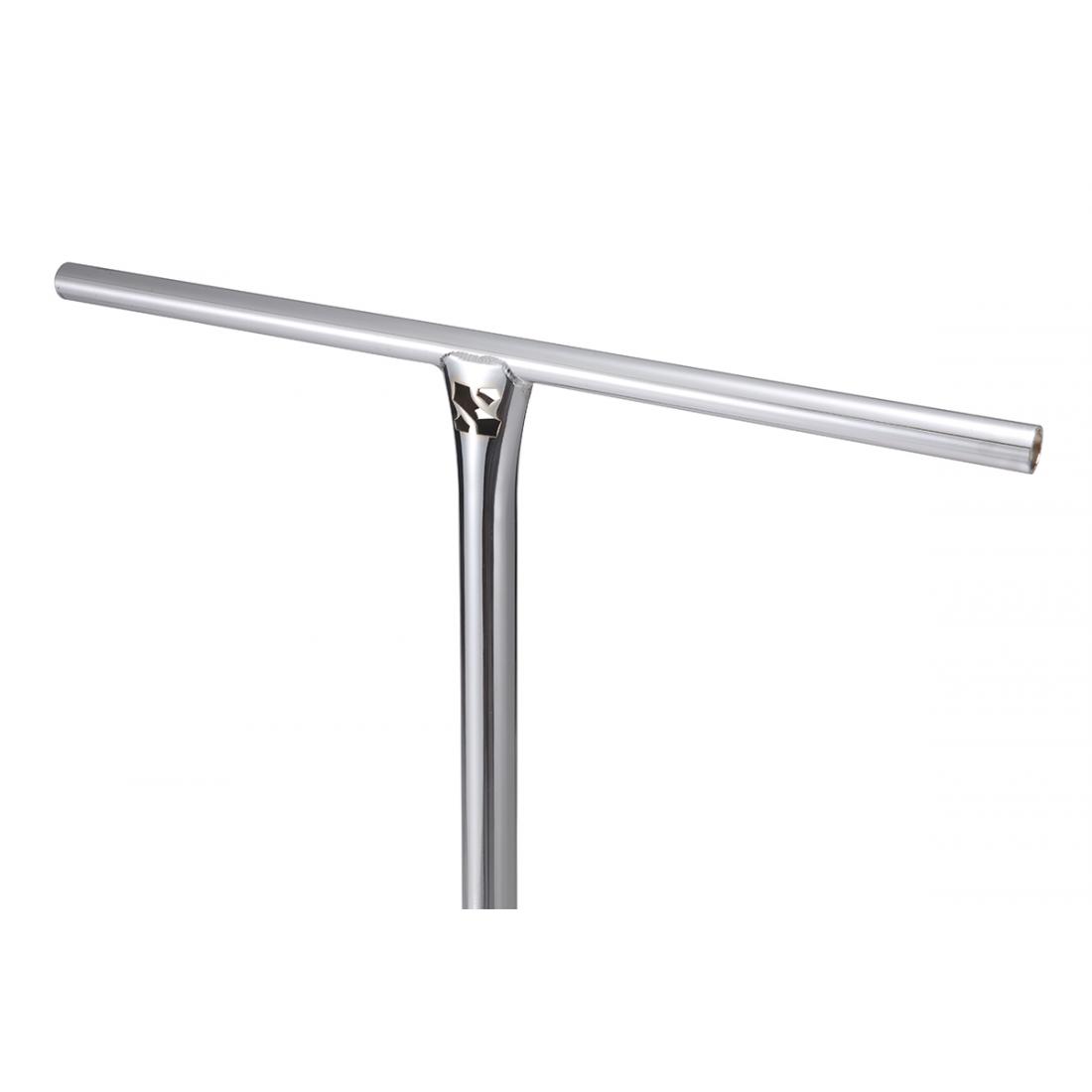
3: Diameter
Most scooter bars come in two main diameters. These are standard and oversize. In this case, diameter means the external diameter of the downtube. The right size and kind of clamp, and fork, your scooter needs, depends on the diameter of the bars.
Standard Bars
In general, standard bars have an internal diameter of 28mm and an outer diameter of 32mm. standard sized bars work best with ICS, ISC, IHC and SCS compression set ups. Standards bars also fit standard clamps and forks, as well as threaded forks. Further, standard scooter bars are made from chrome-steel.
Oversized Scooter Bars
Generally, oversized bars has an internal diameter of 32mm and an external diameter of 35mm. these bars are made for HIC compression and work with oversized clamps and forks, as well as standard forks. They can also be used for SCS compression clamps.
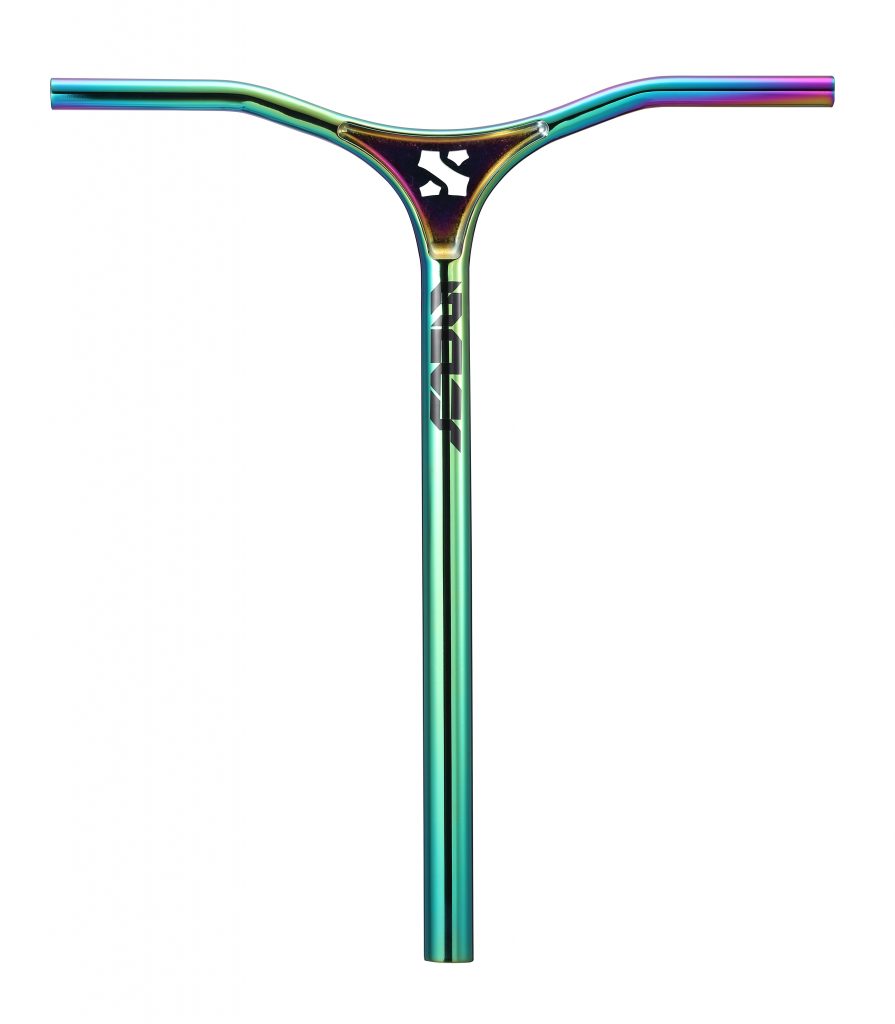
4: Bar Rake
Not all scooter bars feature rake or back sweep. Back sweep refers to when the bar handles are bent back a small amount, similar to bicycle bars. While this can add comfort to your ride, it can take time to get used to, especially if your used to straight bars. In fact, most riders who prefer backsweep bars tend to be ex-BMX riders. Rake or backsweep can range between 2 and 5 degrees.
5: Scooter Bar Slit
The slit refers to the incision at the bottom of the downtube. This makes it possible for your clamp to stabilise the downtube on the fork. As a result, the height of the slit should be at least the height of the clamp. If you use a ICS, HIC, IHC compression system or a threaded fork, then you need to have a slit in the downtube. If you’re using SCS compression, however, the downtube shouldn’t have a slit.
6: Scooter Bar Grips and Ends
Adding grips to your bars make them more comfortable and help you feel more secure. They come in a wide range of textures and colours to match your style. Grips, like those from Sacrifice Sccooters, also help absorb shock when you land. Sacrifice Scooters also provide end plug with our grips, to ensure your safety. They protect the ends of your bars in the case of a crash or accident. Using end plugs will greatly extend the lifespan of your bars, especially if your using aluminium scooter bars.
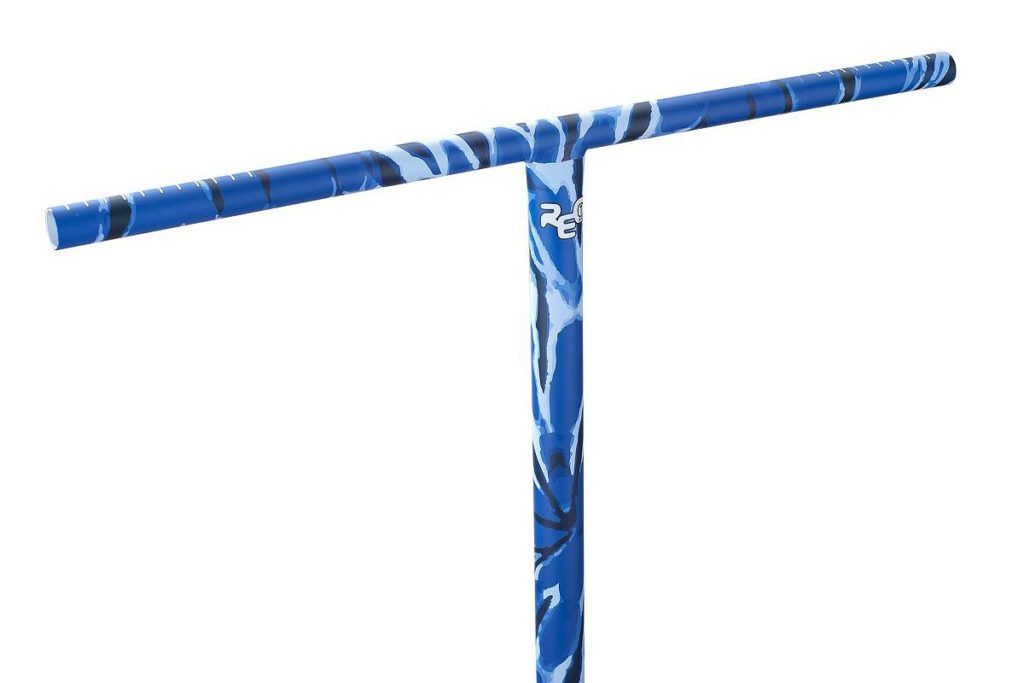
7: Scooter Bars Material
Scooter bars are available in a range of different materials. The most common are alloy, aluminium and titanium. Alloy is considered the most cost-effective and common option. Aluminium offers weight saving. And titanium bars are even lighter again.
However, there is more to consider than the weight of the material.
Alloy Scooter Bars
Alloy bars are generally available in standard and oversized diameters, giving them a wider range of compression options. Be wary of cheap scooter bars when shopping alloy bars. Cheap does not always mean a bargain if the bars wear out too soon.
Aluminium Bars
In order to ensure strength, aluminium bars often have a standard inner diameter but an oversized external. This makes them great for IHC and SCS compression, but also requires the use of an oversized clamp. They are also not compatible with HIC compression. Aluminium is also lightweight and durable.
At Sacrifice Scooters, we manufacture with the highest standards and only use the latest technology to forge and weld our aircraft-grade aluminium. scooter bars, like the Spy, are unique, one-piece scooter bars that ensure you can turn your ride into the best-looking scooter at the park.
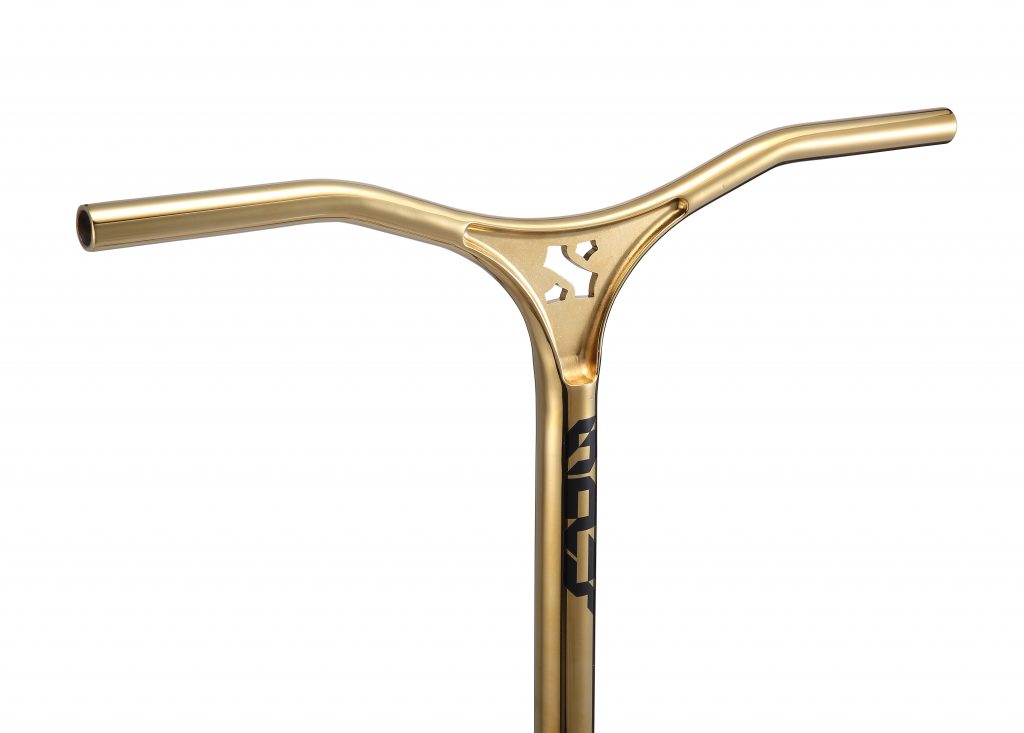
Titanium Scooter Bars
In general, titanium bars are considered oversized. This makes them perfect for SCS compression. And, if you add an oversized clamp, titanium bars are compatible with HIC and IHC compression. At Sacrifice Scooters, we have developed and rigorously tested our super strong and lightweight titanium bars. They are fantastic for riders who demand the best!
However, cutting titanium is not an easy task. Titanium is a reactive metal and changes its chemical properties when exposed to heat. This means you need to “cut it cold” which means keeping the metal cool during the cutting process. Cold cutting requires a lot of different techniques that relies on experience and state of the art equipment. Cutting these bars changes the properties of the titanium, which affects weight, longevity and strength.
Because Sacrifice Scooters don’t recommend you try cutting your titanium bars, yourself, many of our bars come pre-slit for use with compression systems. We also supply a shim for those wanting to use SCS compression.
8: Compression Styles
Many riders ask us what compression they should be running. Compression set up honestly depends on your personal preference. However some compression choices require more maintenance than others, and aren’t always compatible with your bars. The most common compression systems are SCS, HIC and IHC.
Scooter bars using IHC or HIC compression need a slit cut into the bar so the clamp can be tightened. SCS compression, though, shouldn’t have a slit.
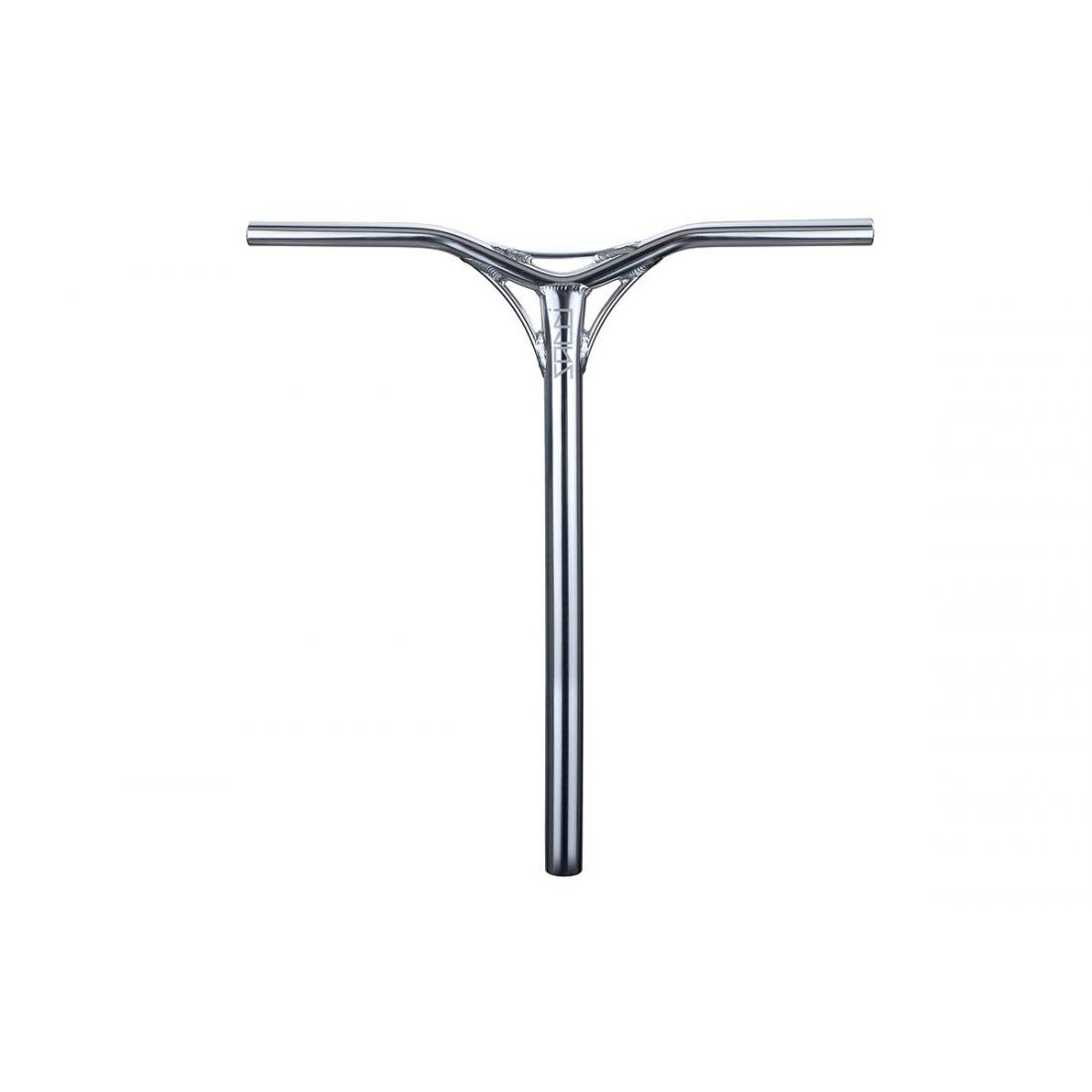
IHC Compression
The ide behind IHC compression is to provide a lighter option to HIC. This system is general built into the actual fork. It is light and can be used with both steel and aluminium scooter bars. Paired with a light clamp, it provides a lightweight stability option. It is also easy to break down for travelling and transport.
HIC Compression
HIC stands for Hidden Internal Compression. It is generally cheaper than SCS and is a great option for riders on a budget. This solid compression system still gives the reliability of SCS and is relatively easy to work with. You simply loosen the clamp and remove the scooter bars, to tighten the compression system.
Like IHC, HIC is easy to transport and travel with. However, you can’t use HIC with aluminium and standard bars. You will also need to have a slit cut into your scooter bars to allow the clamp to fasten correctly to the fork.
SCS Compression
SCS stands for Standard Compression System. You can use them with steel standard-sized bars and some even fit oversized steel bars and aluminium scooter bars. SCS compression doesn’t require a slit, which means there’s no risk of the bars snapping above the clamp. They stay tighter, for longer, and are also easy to travel with.
Looking for the best pro scooter bars? Want to upgrade your whip or are you building a new custom scooter? Explore Sacrifice Scooter’s range today!





